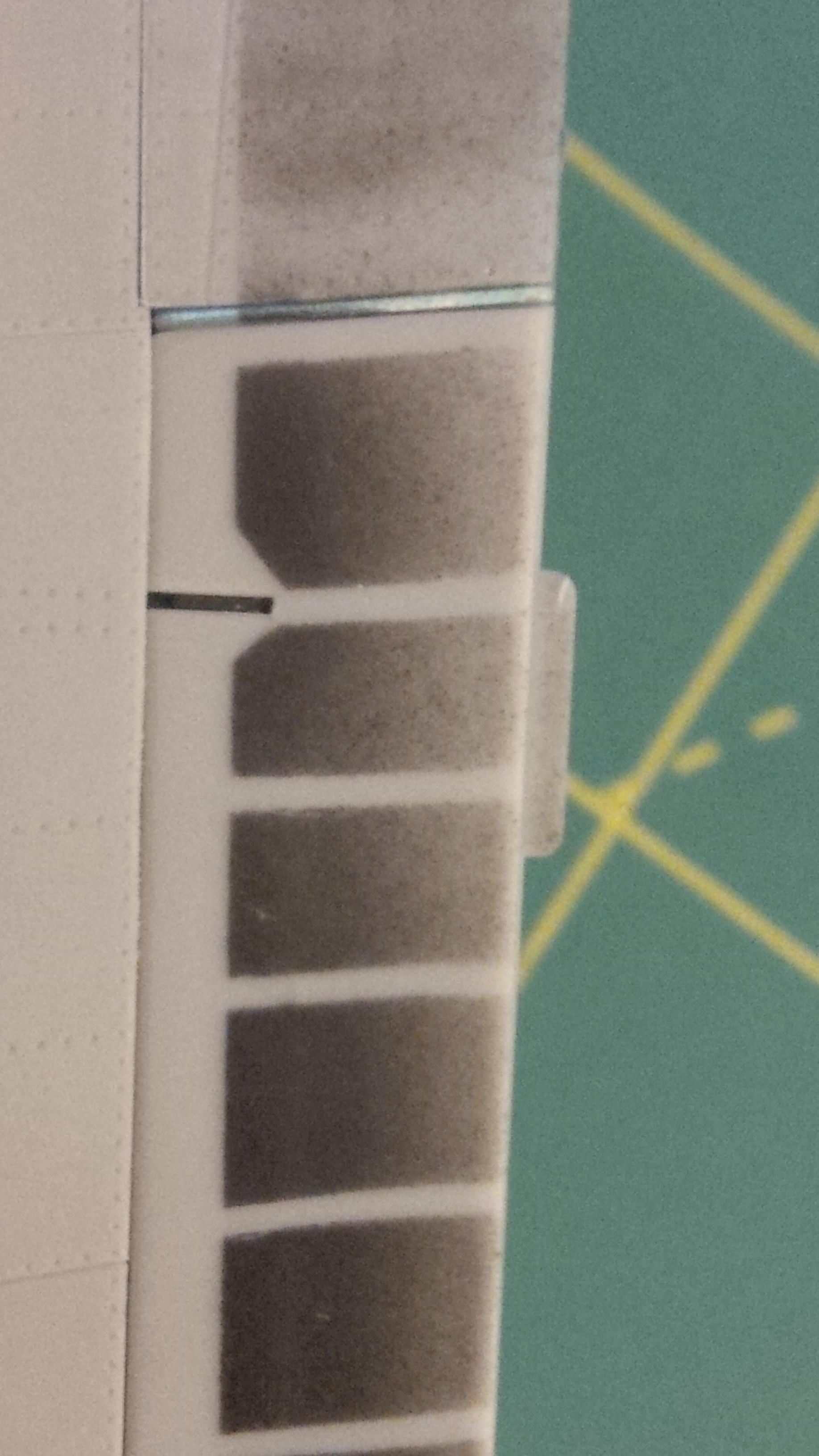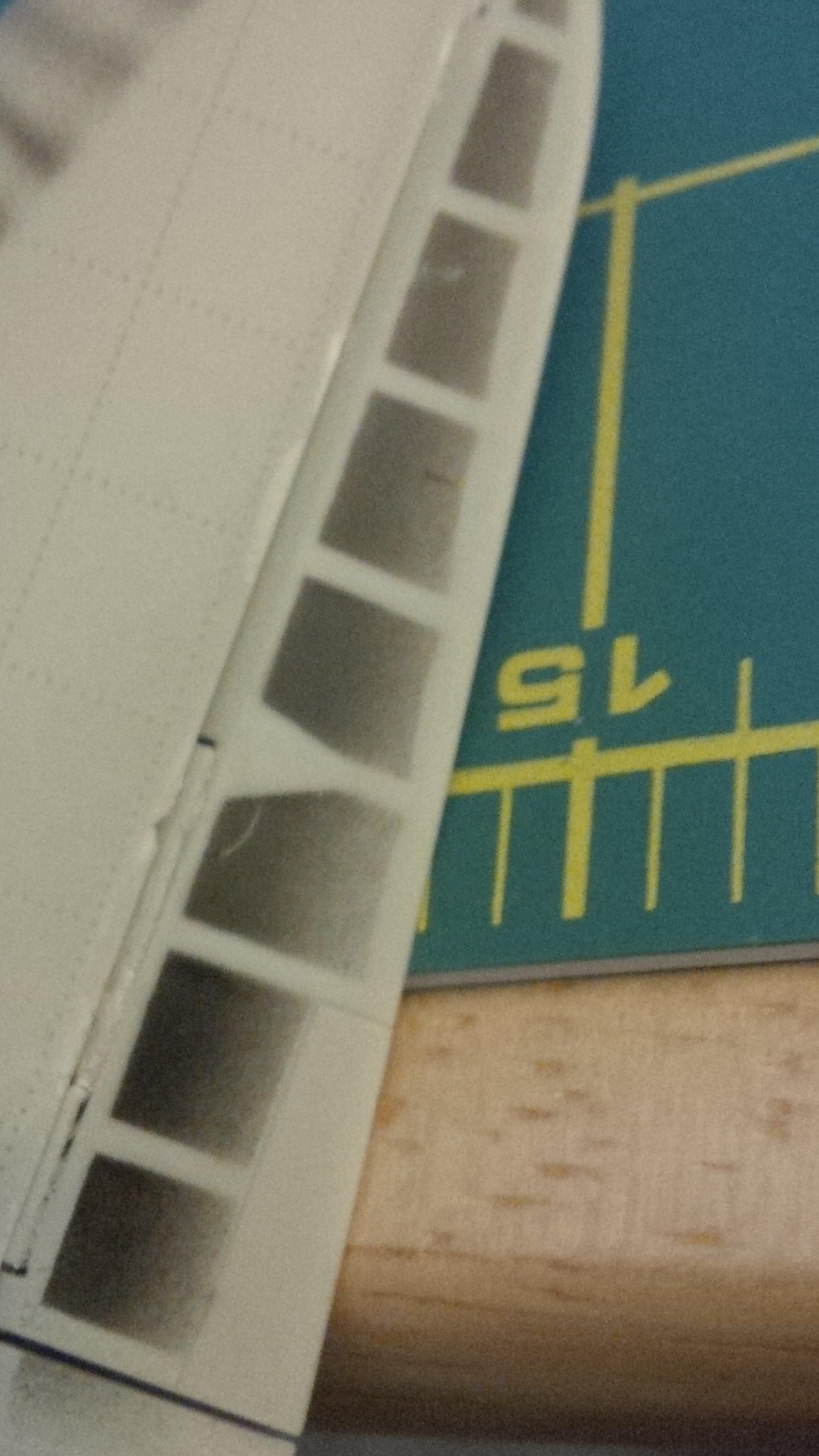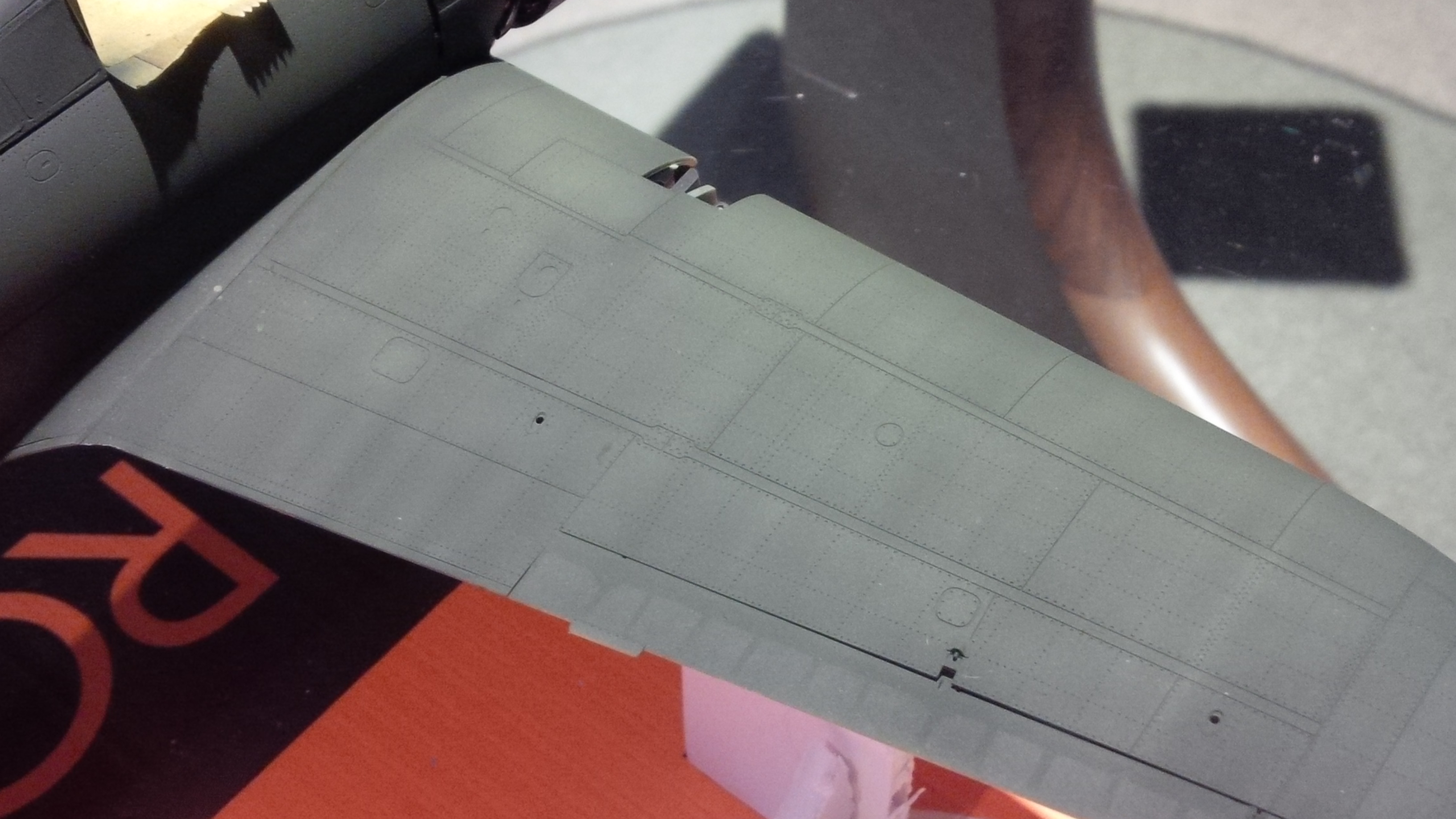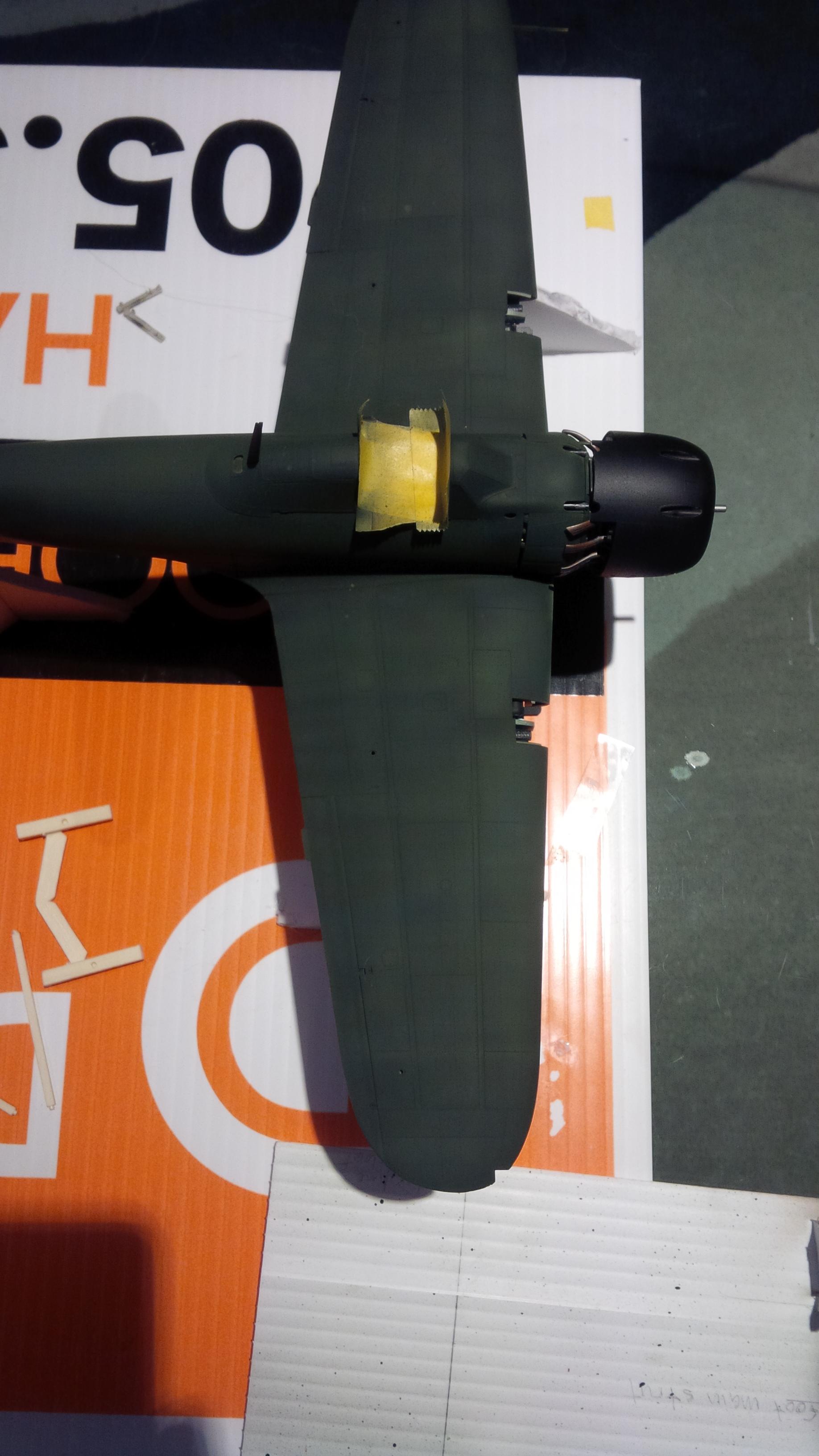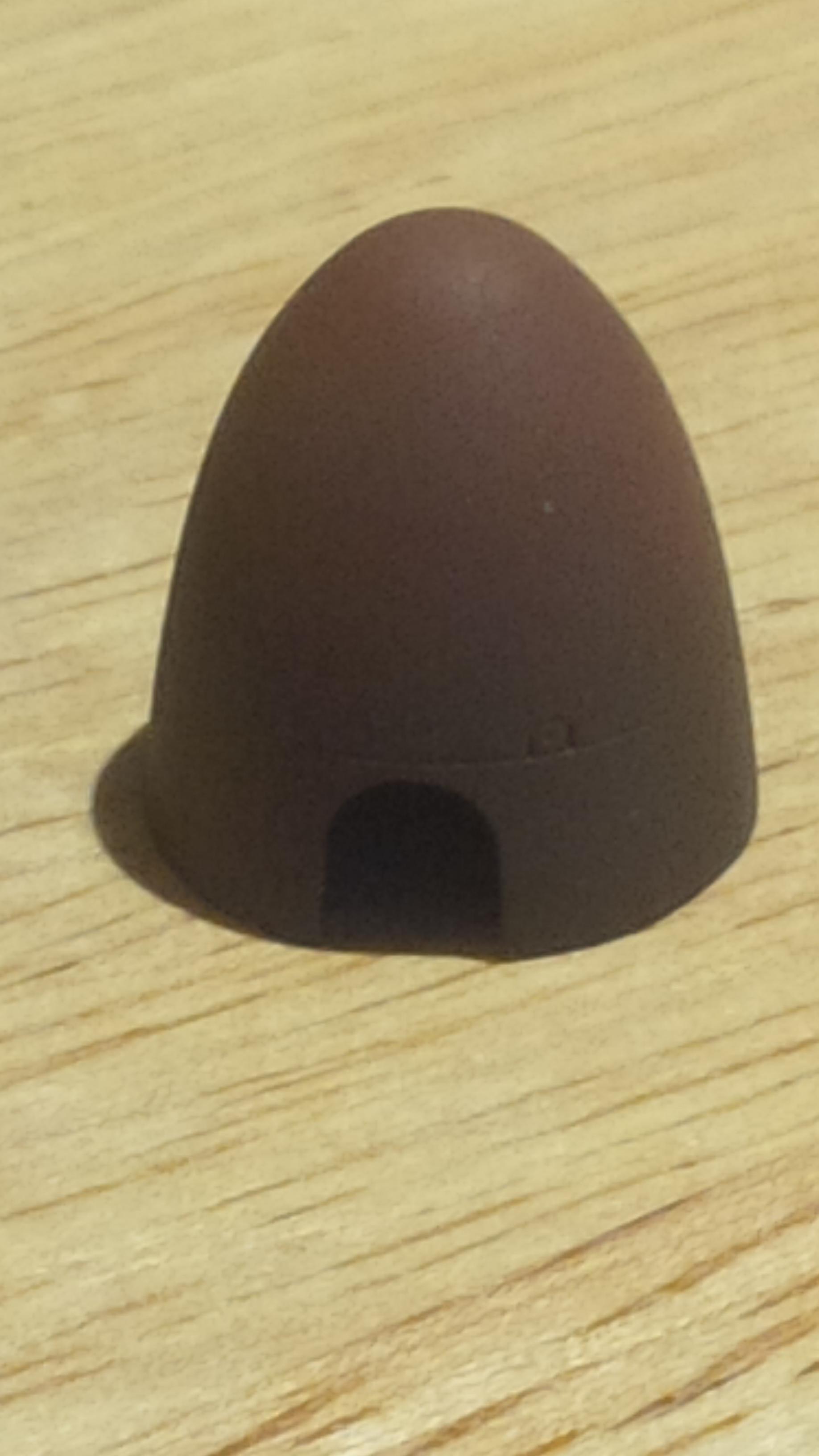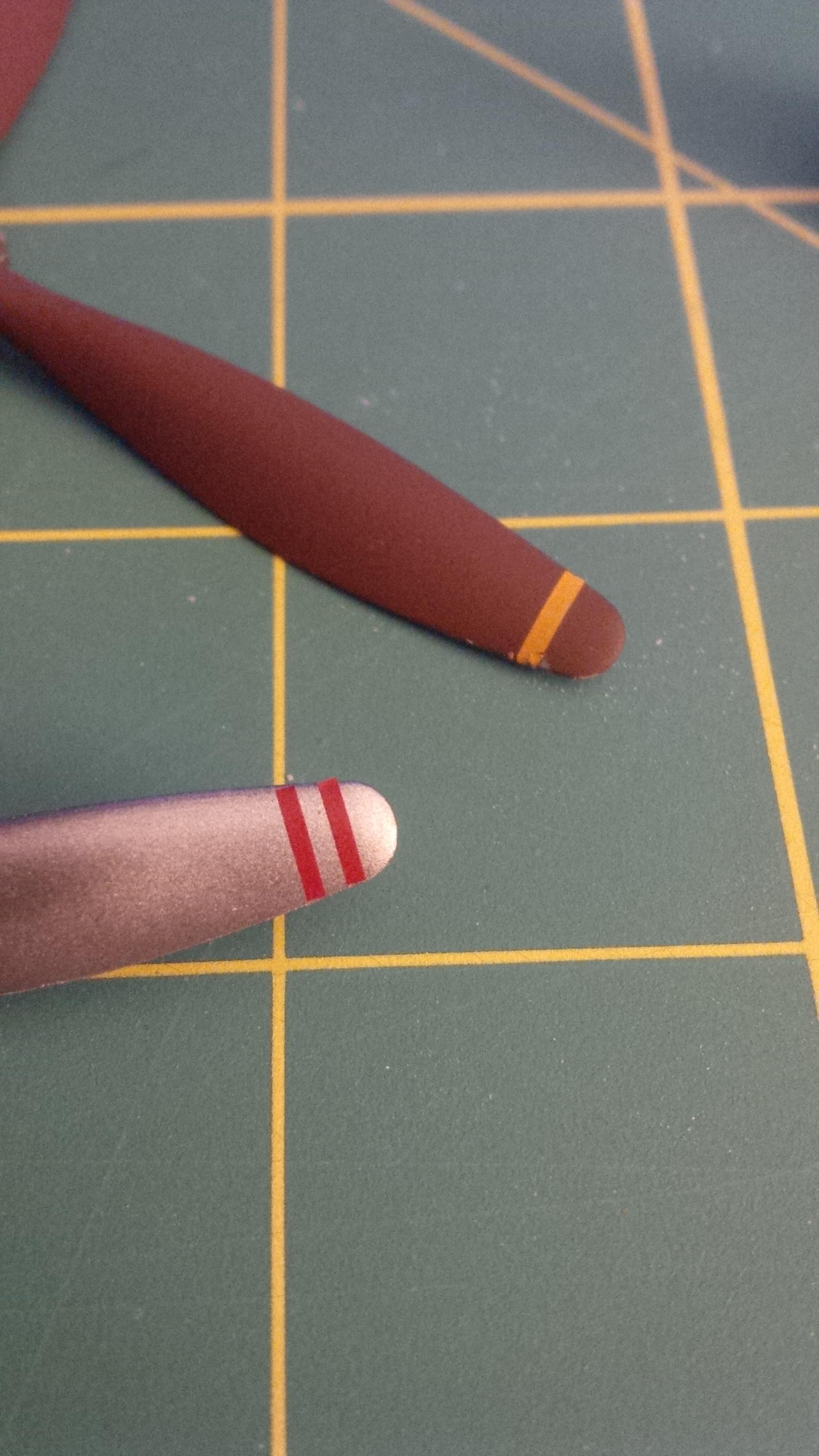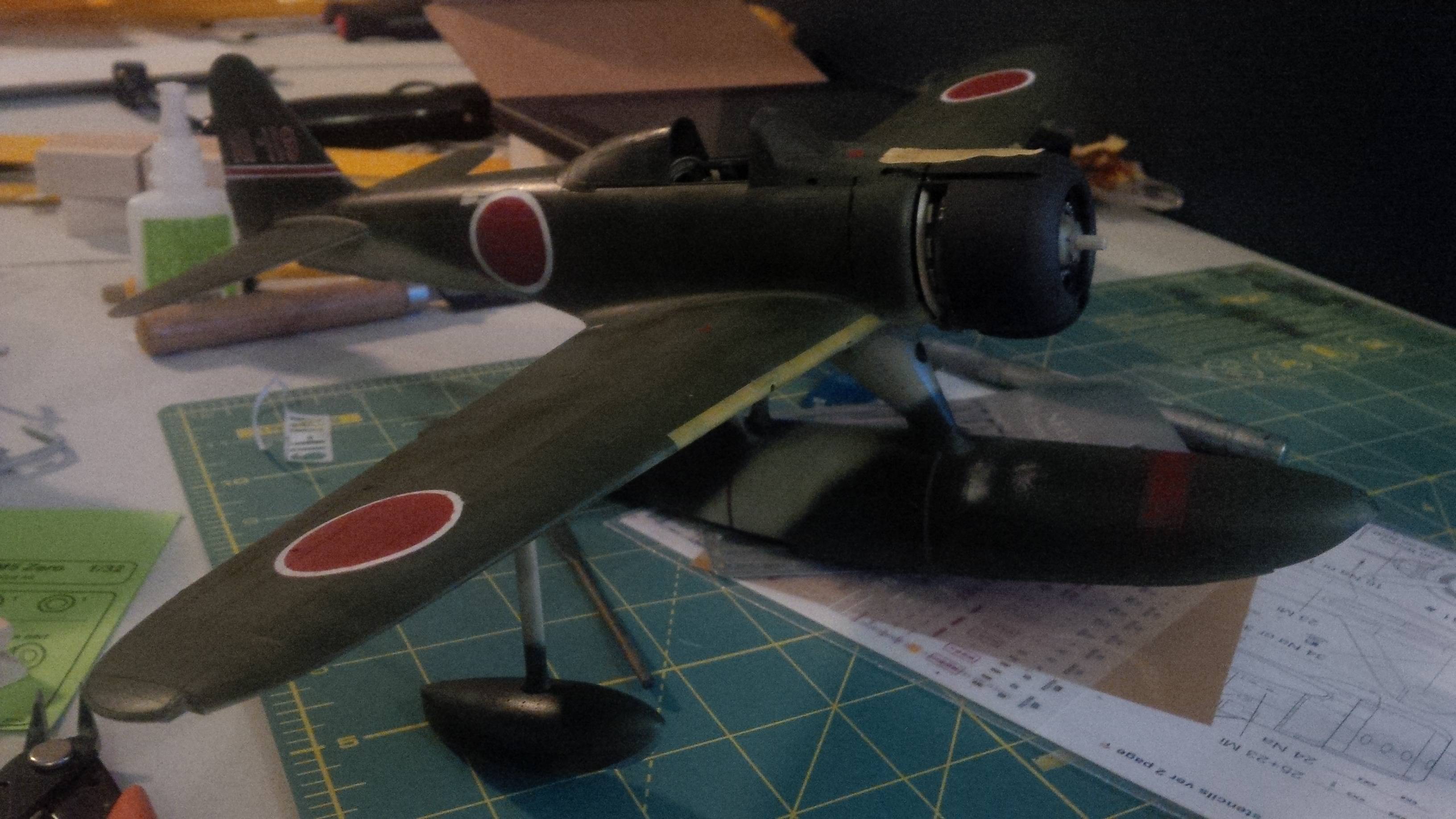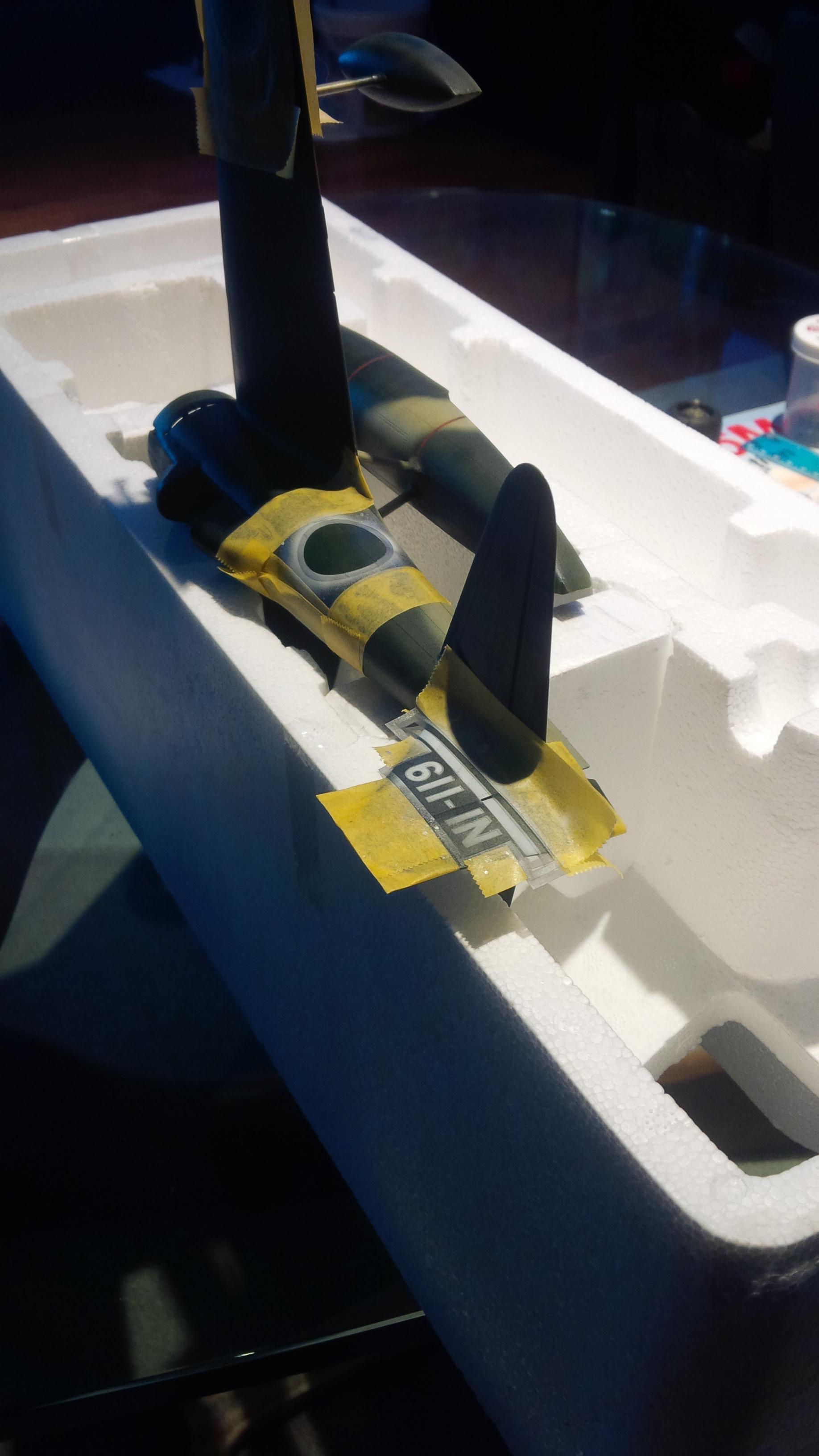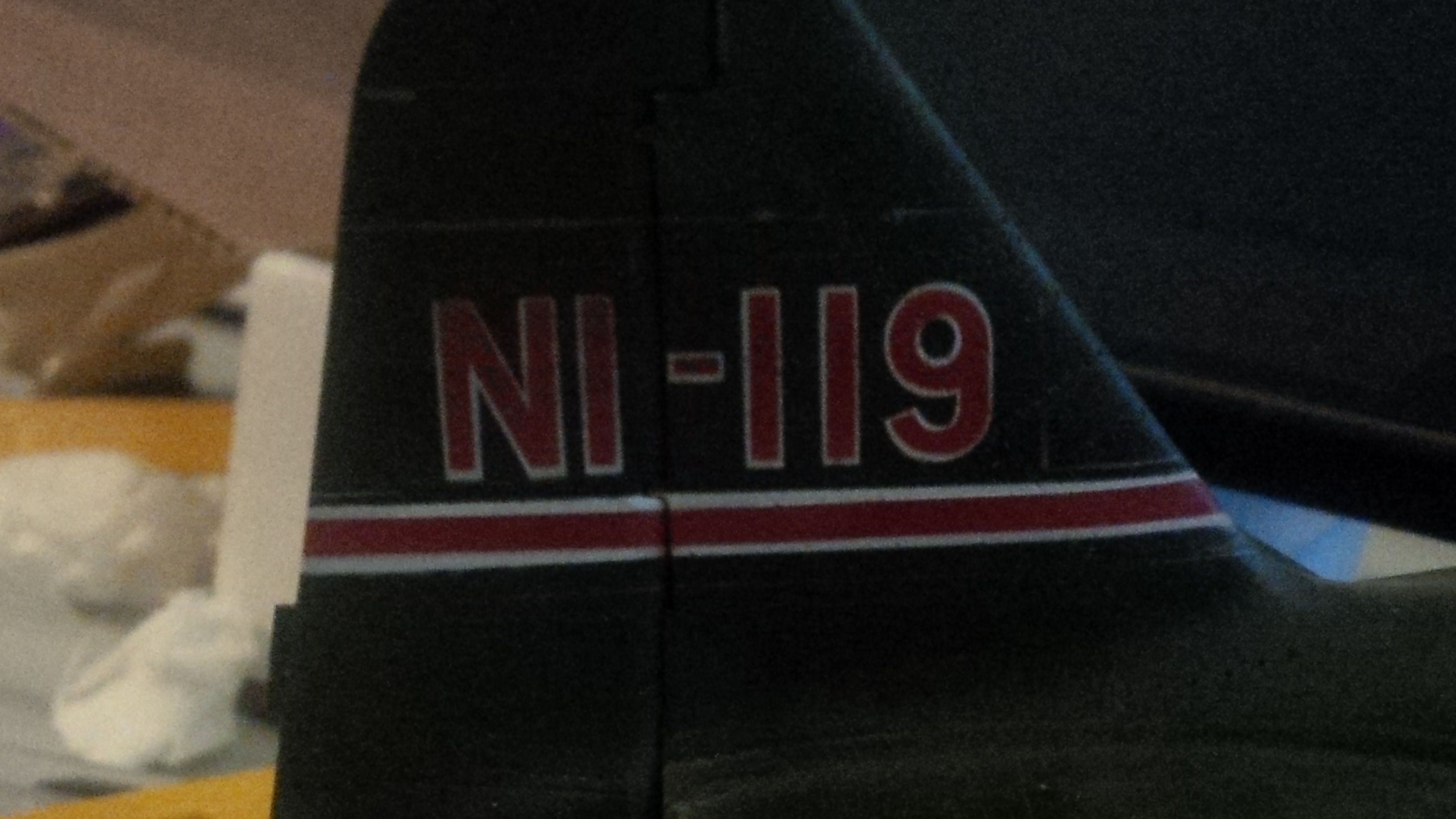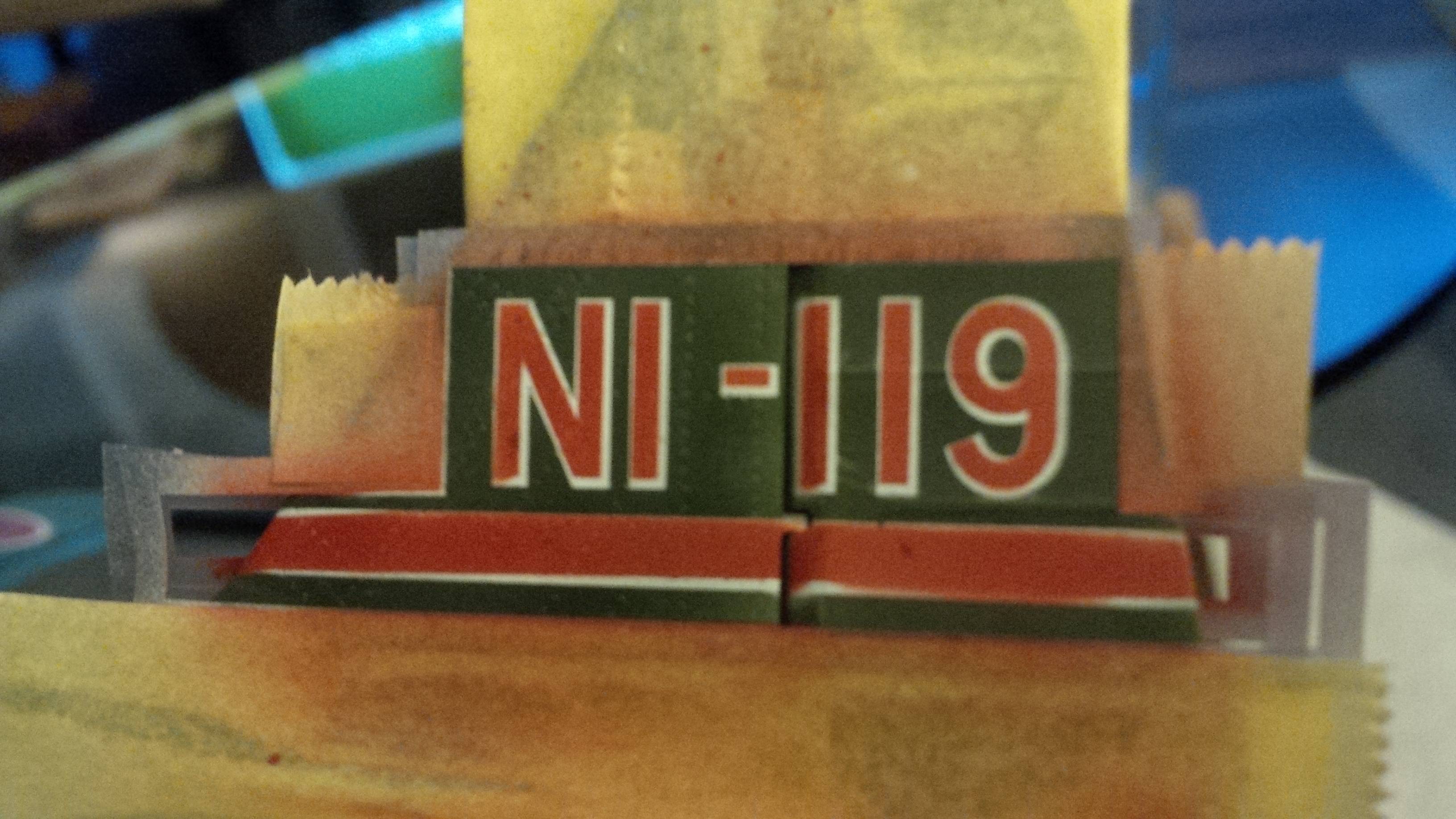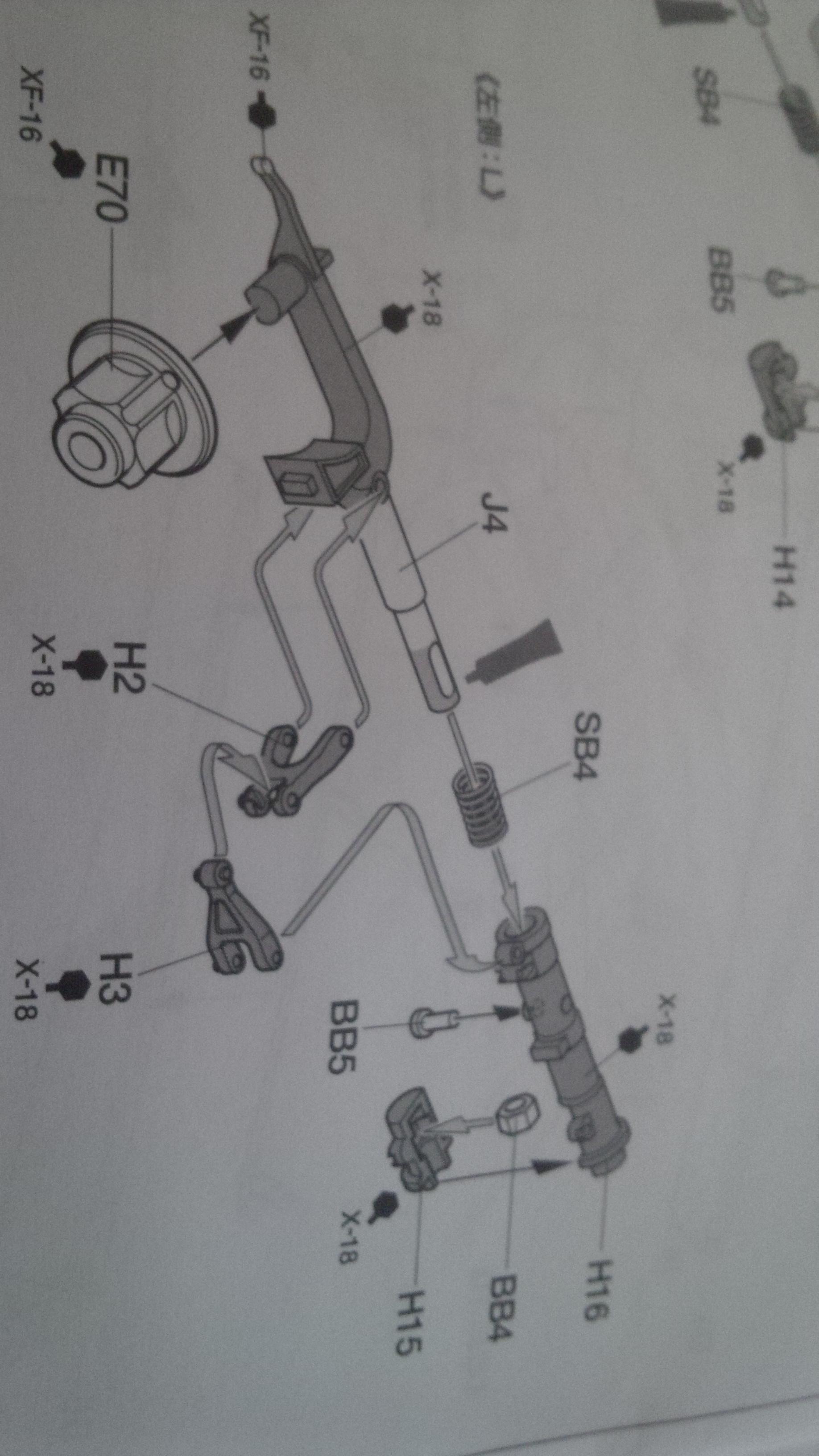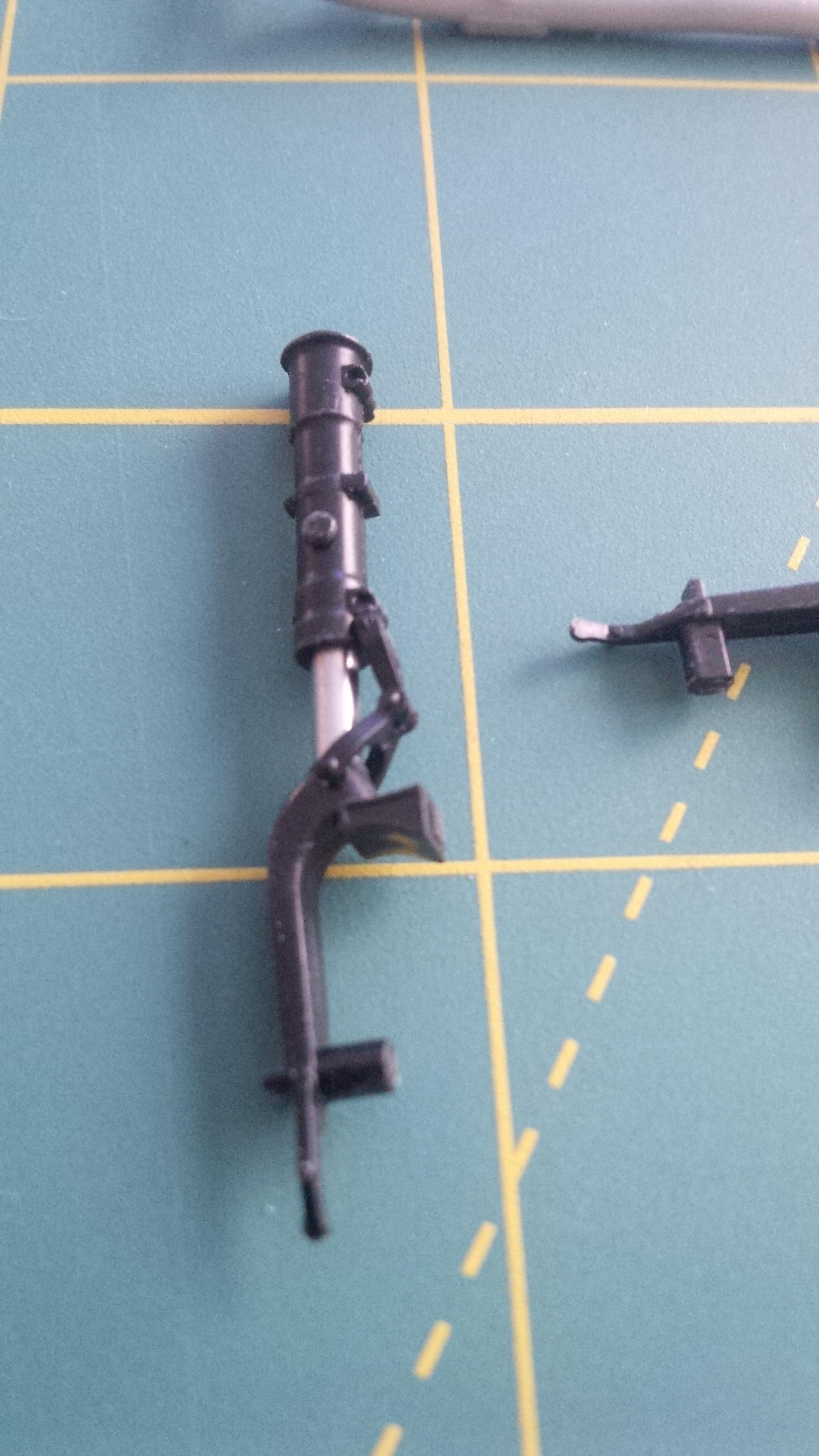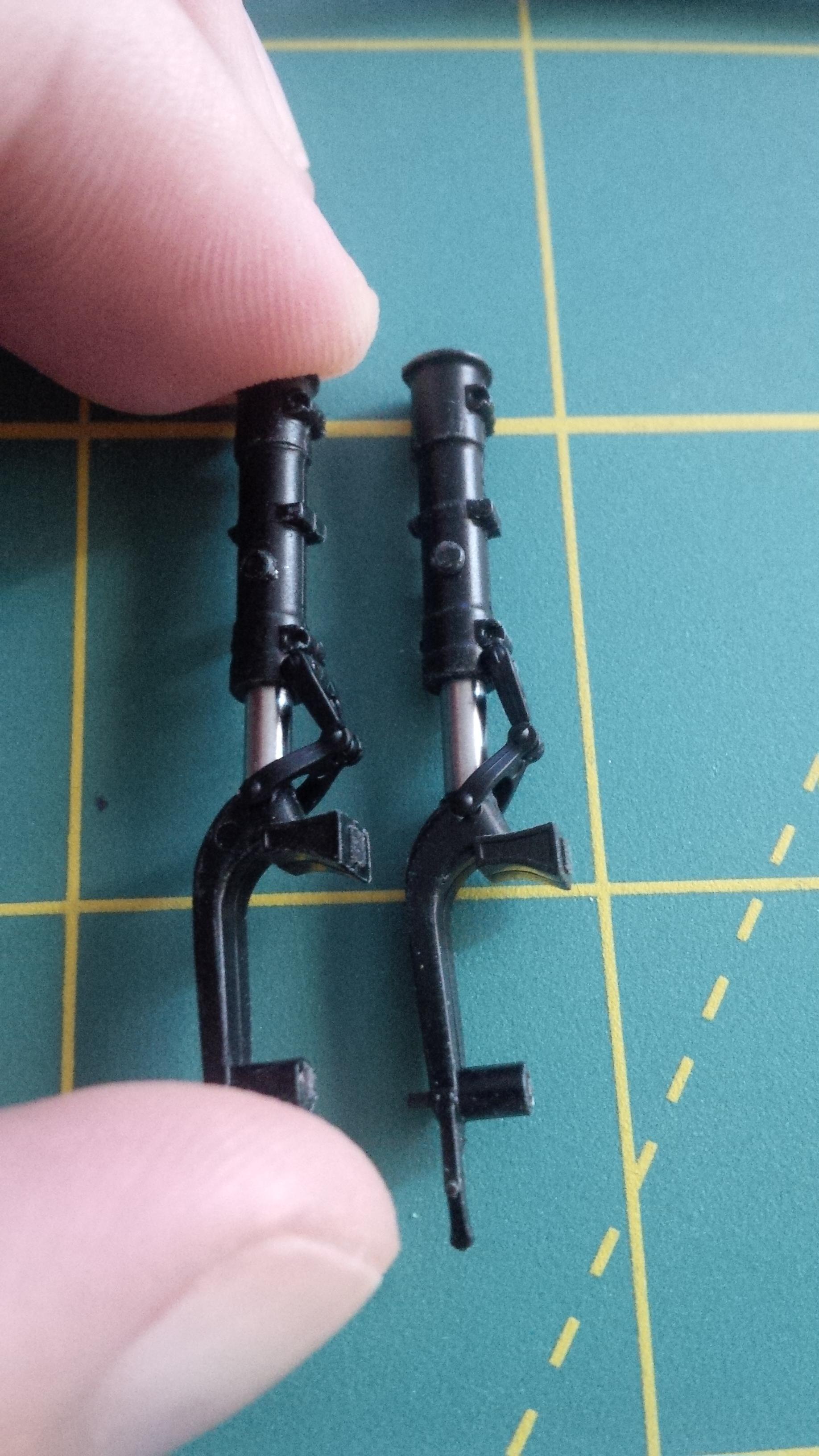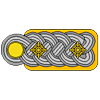Hey kids! Here’s a long overdue update – and some substantial progress.
As I mentioned before, these builds are an opportunity for me to experiment and try some new techniques. This is critical so your building doesn’t become stale. We all have those modeller’s in our chapter – the ones who always build the same and you could pick their builds out of a lineup, which isn’t always a good thing.
For these builds, I thought I would try panel-preshading. I’m not abandoning the traditional preshading that has served me so well, but rather I’m augmenting it. Hopefully this adds more depth to my finishes.
The panel method is simple - various panels are painted lighter or darker than the base colour (sometimes primer, in this case just the gray plastic). Note that I still am using the traditional method of preshading as well.
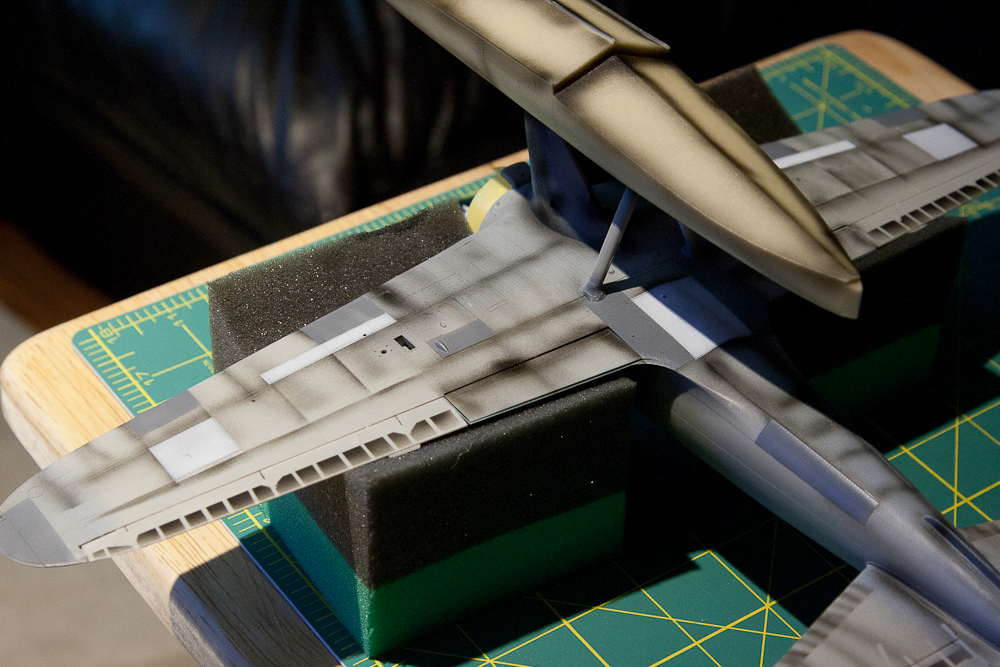
This step had been done for quite a while.... I was staring at the two Zeros for weeks before I commited to a plan.
Against all advice, I decided to mount the wingtip floats on the Rufe before painting. The reason it simple - I don't want to have to blend the struts into the wing after the painting is complete and then have to do more painting that may or may not match the work already done.
It took me so long because I needed to figure out how to make a jig so the floats were aligned properly the first time.
Step 1 - PIN THAT RESIN!!!


The strut is pinned into the top of the float as well as into the bottom of the wing to add strength. This is tedious work, but the metal pin allowed me to bend the angle which the strut attached to the float until it was correct. The floats are distinctly nose up.
The Jig
An easy and equally crazy solution - it's not hoarding when you use what you've got!
I took a small block of wood, and wouldn't you know it - the width of a drop cut is perfect for the strut.
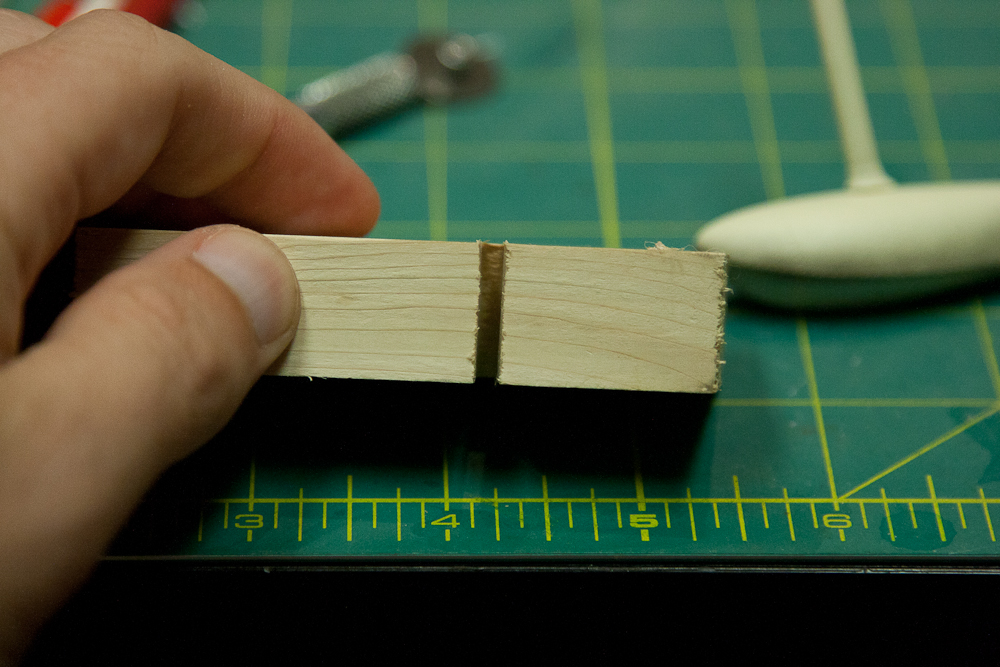
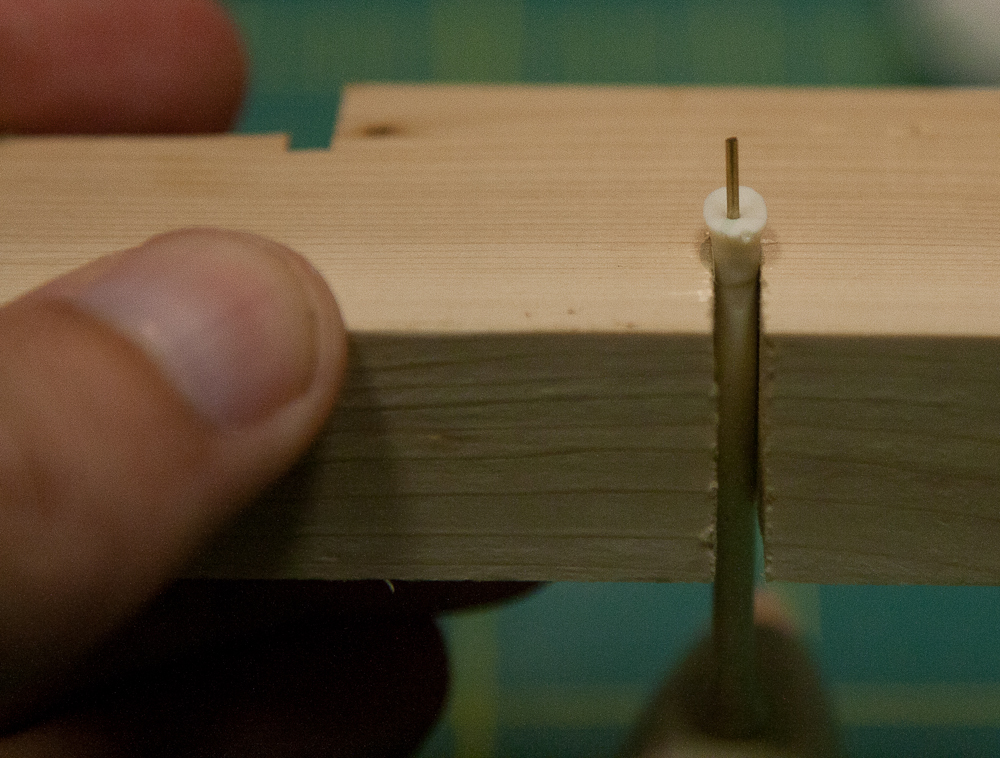
This will allow me to keep the strut at 90 degrees to the dihedral of the wing. This way I can concentrate on getting the longitudinal alignment correct. Dealing with one axis is enough work when opting for a slow cure time.
The fairing on the end of the strut is wider than the strut itself..... hmmm - I think I have an idea (although I don't have a router)
To find the width of the fairing, I used a scribing template. 4mm is too narrow and 4.5mm is perfect! Then I transferred that to a drill bit (because I was too lazy to get my phone to convert to American)

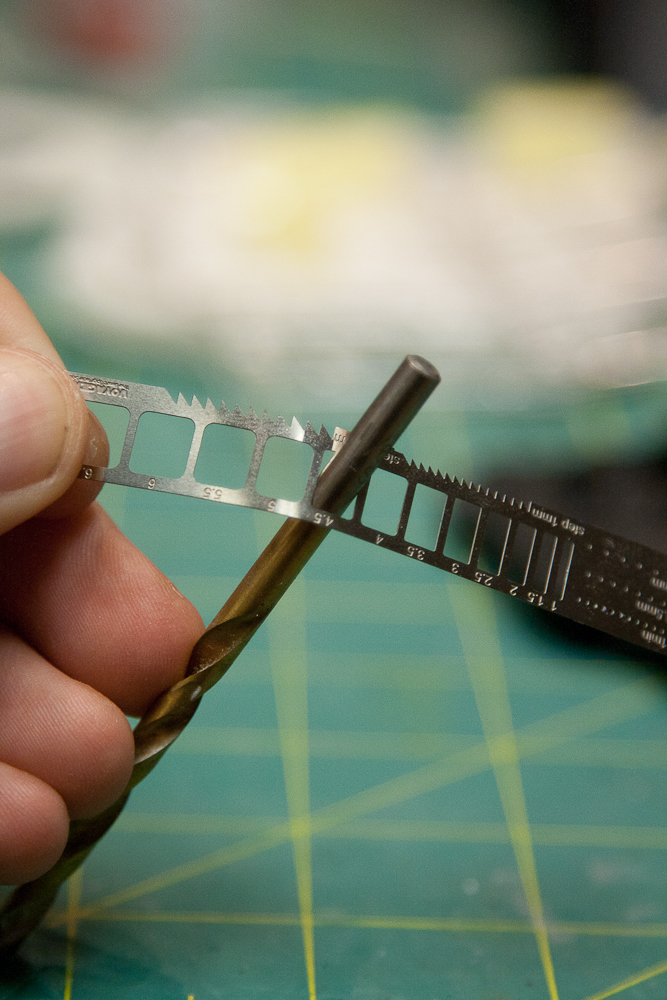
Then I widened the top end of the slot JUST ENOUGH for the strut to sit flat. Drilling down just a little into the slot also provided a pocket to ensure the top of the strut stayed right where I wanted it.

Some tense moments, where the back end went nickel-dime-nickel-dime ensued. These things work in theory, but one tremble of the fingers and I'd have glue all over the bottom of the wing or a broken strut.... I needed to keep moving forward on this build.
Once the block goes flat against the win, the lateral angle is set at 90 degrees to the bottom of the wing (which, coincidentally is NOT vertical.)

The other side didn't want to lie flat. Another block and some gravity fixed that.
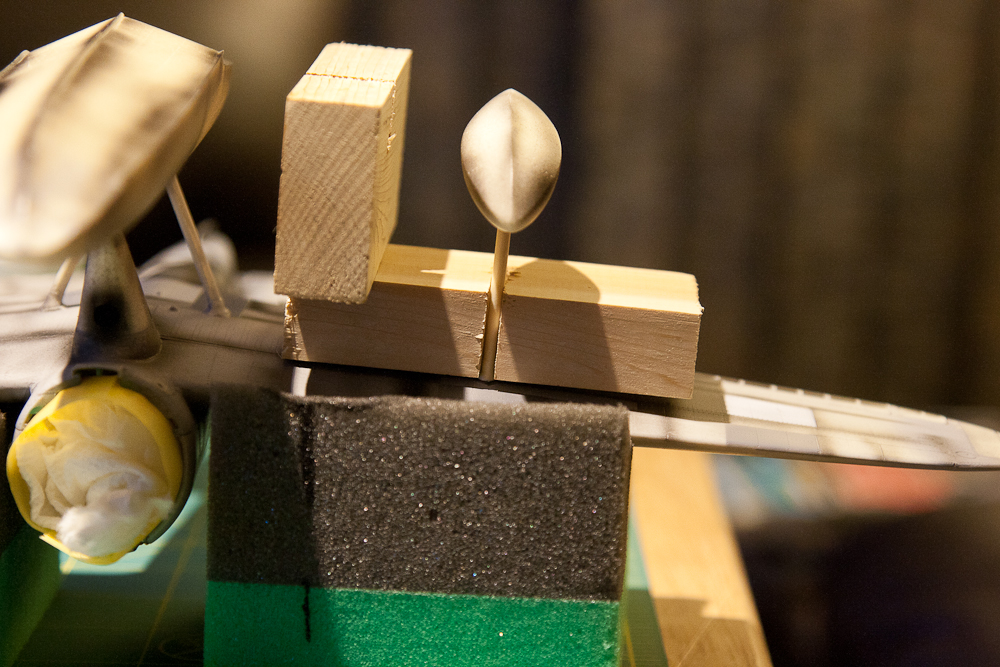
Now to align the strut front to back
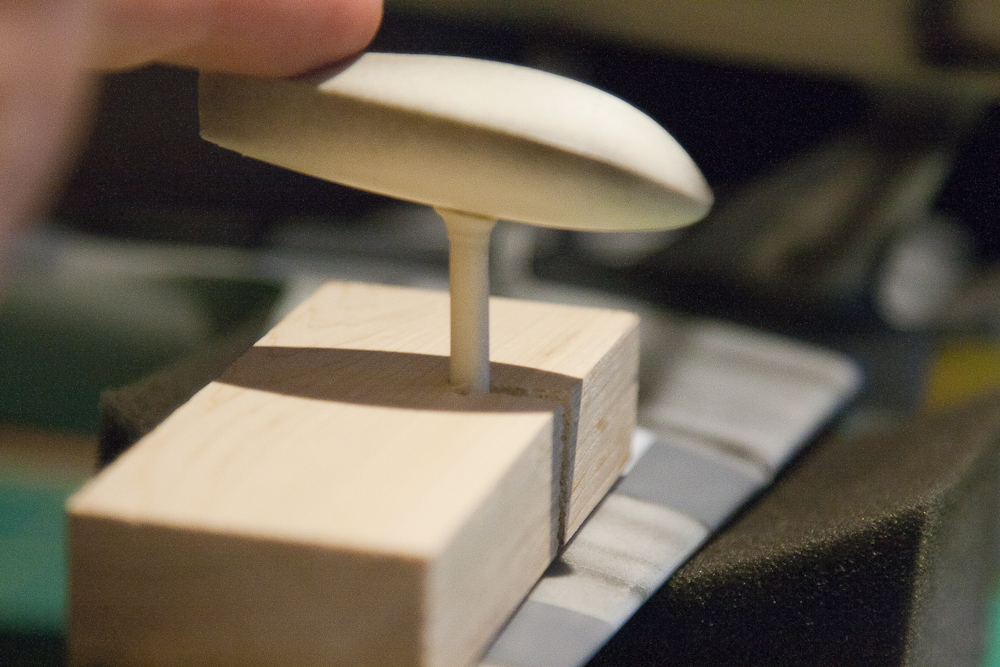
Once the glue had set just enough that I didn't need to keep holding the float, I left the plane for an hour. Voila!

Enough jibber jabber. Let's finally get some paint on this bird! (These birds.)
The Rufe will have a little bit of wear in the usual areas. Another new method will be tried. I'll need a metal base, for that I will use the alclad black primer, duraliminuniniminum (because it holds up to masking a lot better than a lot of the other colours). Next I made a colour similar to the red primer used by the Japanese. Red, brown, some orange.... I only applied these colours where I will do some chipping - to keep the pain thin everywhere else.
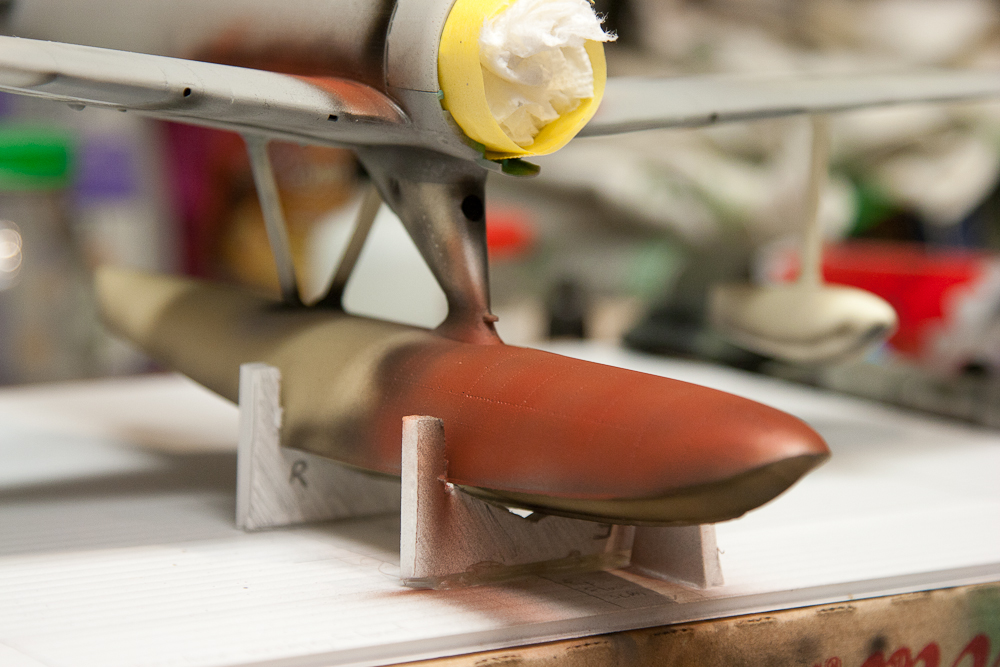
AMEIRO!
Ruuuuuuuuuuuuuuuuuuuuuuuuuuuuun! This colur is even more contentious than the Aotake laquer applied inside the Zero. The name of the colour literally translates to 'Caramel color', but you'll see plenty of builds where the modeller has painted their Zero a gray or a white.
There is also a clearcoat painted on top of this paint which had a tendency to change colour in much the same way the decal film does on old sheets of decals. This is why the rumours of a mauve Rufe probably exist - a caramel paint, a clearcoat which was no longer clear, the heat of combat and a rising or setting sun can play tricks on anyone's eye.
I mixed my own Ameiro from a combination of Model Master Enamel SAC Bomber Tan, Flat White and a hint of Green Zinc Chromate. I'm very happy with how the colour turned out.
The A6M-5

(NOTE! - the preshading on the control surfaces shown earlier. This is one of the new techniques I tried out - I really like it).

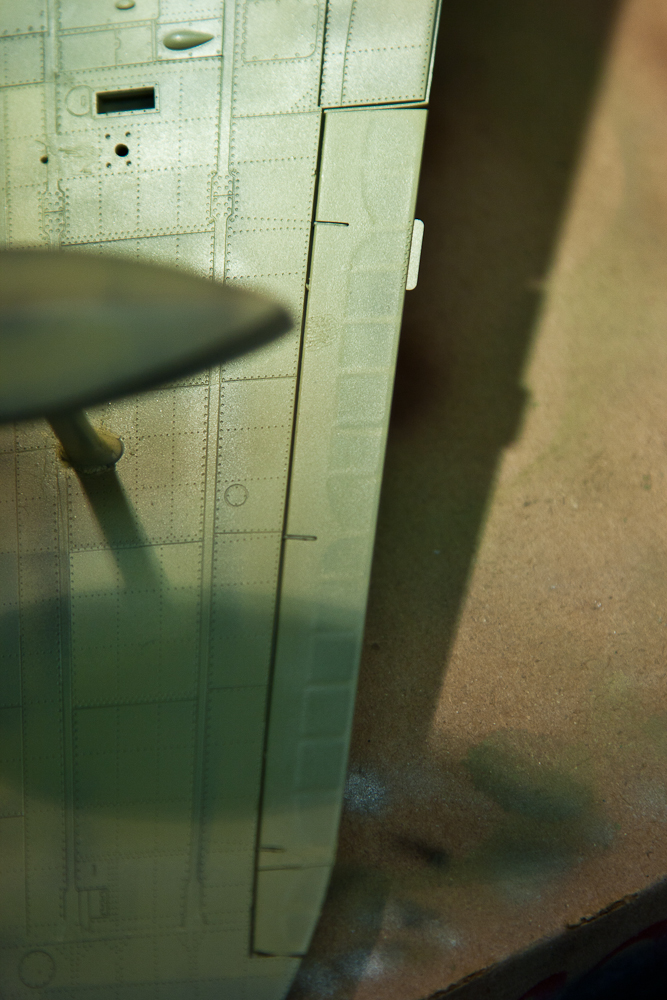
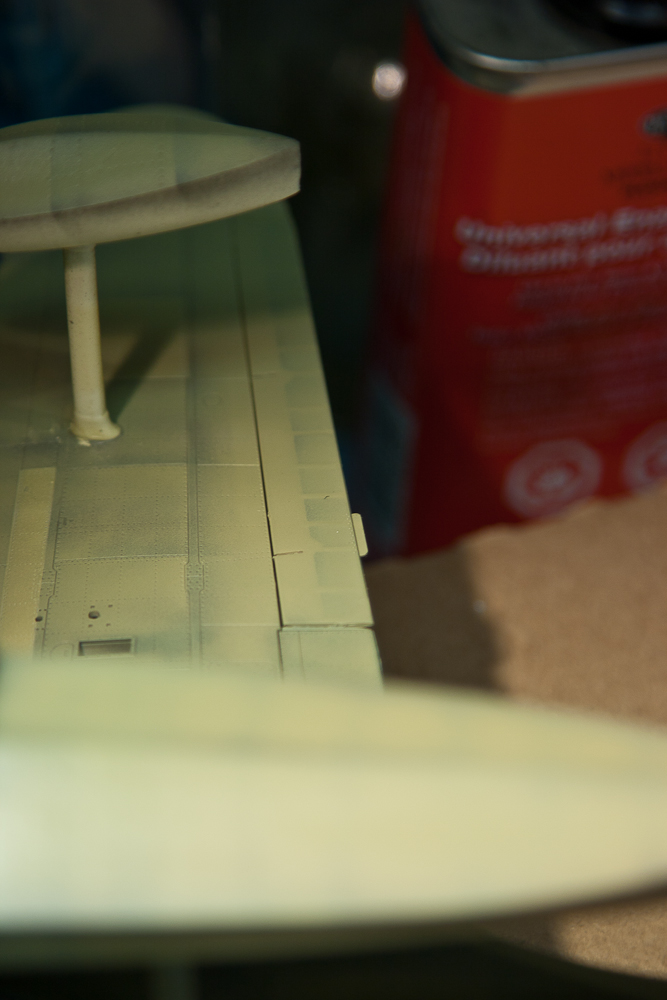
In the photo above you can see the pre-shading on the control surfaces, the panel preshading AND the more traditional line type shading. She looks like a dirty bird without any washes or weathing products already!
Bonus engine shot NOT taken with a cell phone camera!
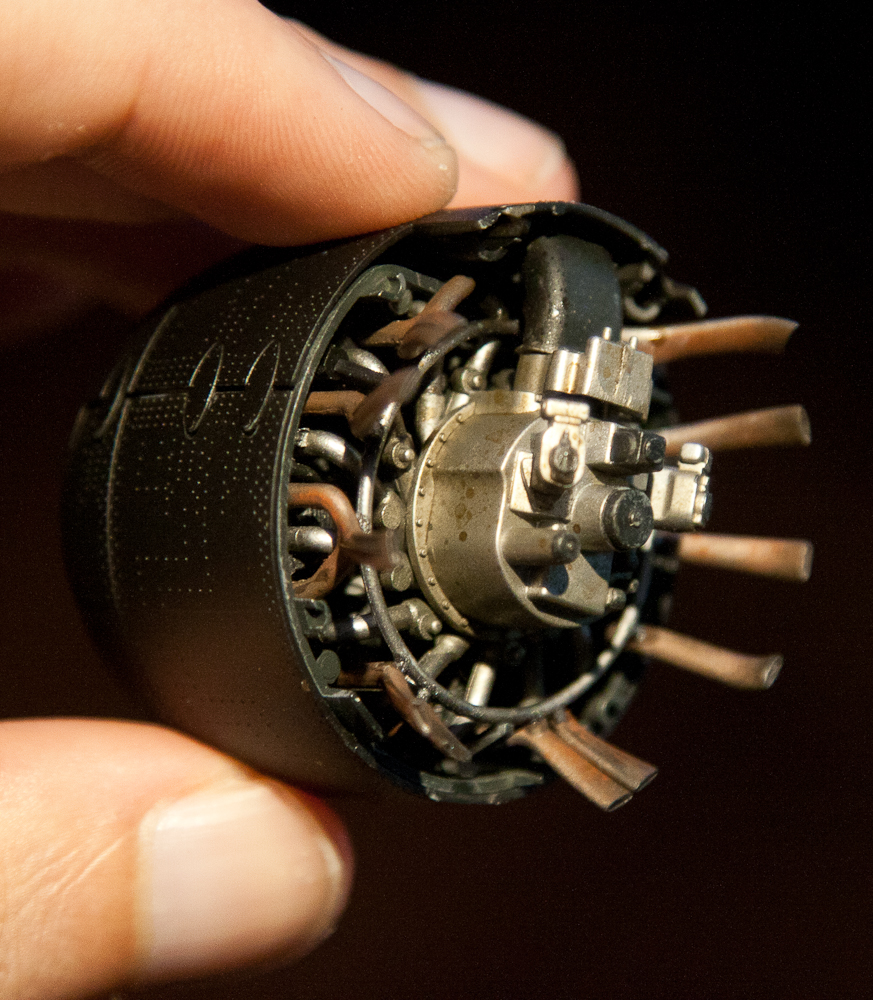
I apologize for rambling on and the lack of proof-reading, but alas I must run along and spend time with my beautiful wife.
That's all for now folks! On to the dark green, and then the MIRACLE MASKS!!!!!!!!!!!!!!
Matt














